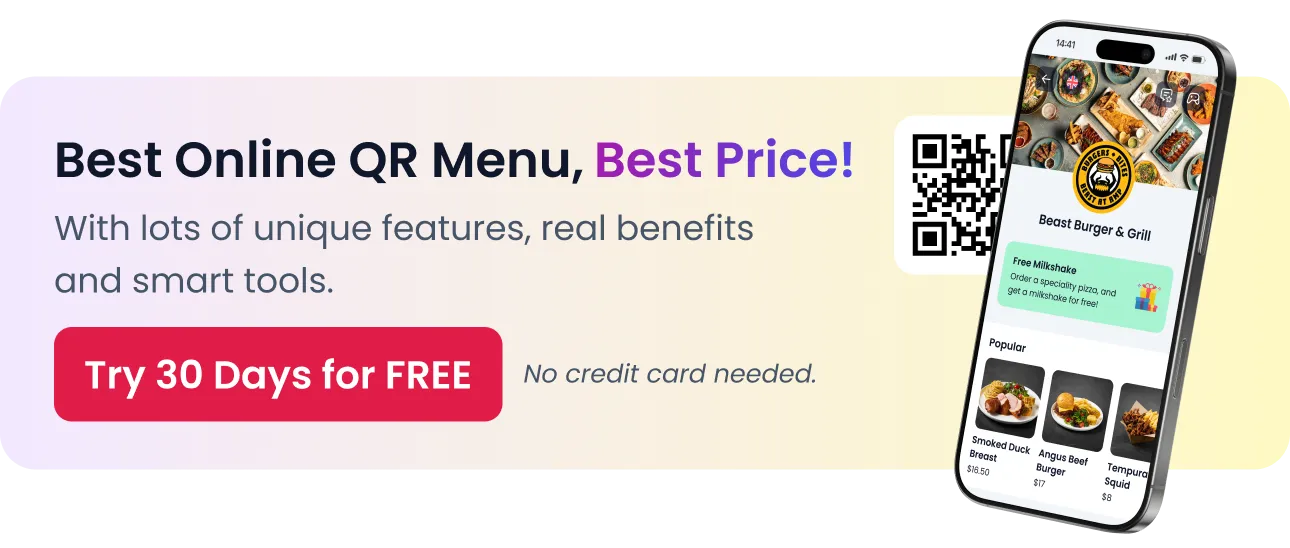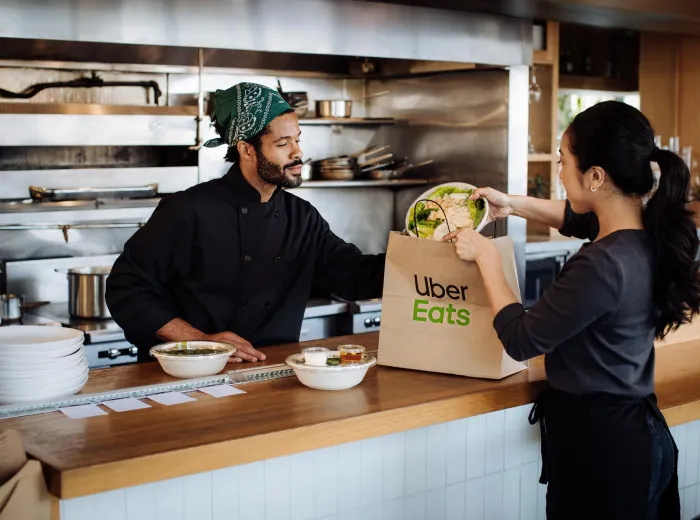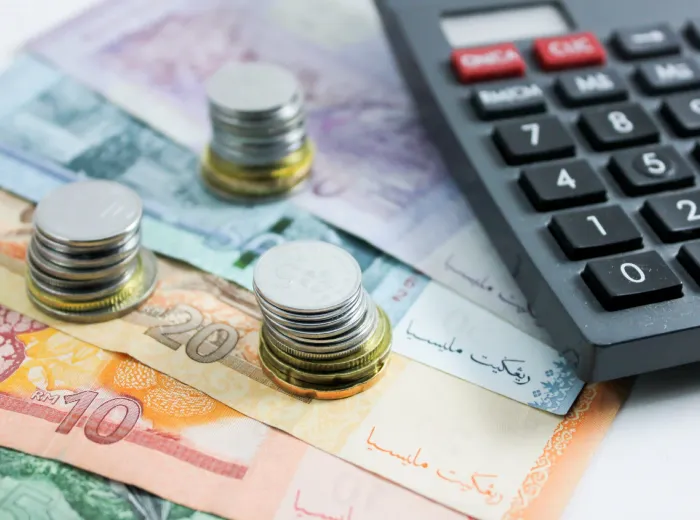

The Benefits of Building a Loyalty Program for Restaurants
In the restaurant world, customer loyalty isn’t just a nice-to-have — it’s a competitive edge. With rising food costs, tight margins, and more options than ever for diners, keeping guests coming back is more profitable than constantly trying to attract new ones. That’s where a loyalty program becomes a powerful tool. It’s not just about offering discounts or freebies; it’s about building a relationship that makes your restaurant their go-to spot.
Whether you’re running a cozy café, a bustling fast-casual eatery, or a fine dining venue, a well-designed loyalty program can increase repeat visits, boost your average order value, and turn occasional customers into regulars. More importantly, it gives you data — real, actionable insights into who your best customers are, what they love, and how to market to them more effectively.
In this guide, we’ll walk through the real-world benefits of restaurant loyalty programs, how to design one that actually works, common pitfalls to avoid, and practical tips for making it a success — whether you’re starting from scratch or improving an existing system.
Why Loyalty Programs Matter in Today’s Restaurant World
In today’s ultra-competitive foodservice landscape, simply offering great food and service is no longer enough to guarantee repeat business. Diners have endless options — from nearby competitors to delivery apps filled with tempting promotions. Loyalty programs help restaurants stay top-of-mind, incentivize repeat visits, and create a deeper connection with guests. Below are the key reasons why implementing a loyalty program is no longer optional — it’s strategic.
Customers are more selective than ever
With economic pressures and more dining choices, today’s customers are deliberate with how and where they spend. A loyalty program can tip the scales in your favor by offering added value and a sense of reward. It’s not just about price — it’s about perceived appreciation.
A few drivers behind this shift:
- Rising inflation and tighter household budgets
- Convenience and deals offered by third-party apps
- Increasing importance of customer experience in dining decisions
Loyalty drives profits, not just repeat visits
Loyal customers don’t just come back more often — they tend to spend more when they do. According to industry studies, a returning guest can spend 25% to 67% more per visit than a first-timer. Plus, the cost of retaining a customer is significantly lower than acquiring a new one.
Benefits to your bottom line:
- Increased average order size
- Higher frequency of visits
- Better lifetime value per customer
- More predictable revenue streams
Data is the new currency
Loyalty programs give you something incredibly valuable: insight into customer behavior. From knowing who visits most often to understanding what dishes are fan favorites, this data helps you make smarter decisions in marketing, operations, and menu engineering.
What you can track with a well-structured program:
- Popular visit times and menu items
- Customer demographics and contact info
- Redemption rates and campaign effectiveness
- Cross-sell and upsell opportunities
A restaurant without data is flying blind — loyalty programs help turn the lights on.
What Exactly Is a Restaurant Loyalty Program?
A restaurant loyalty program is a structured system that rewards repeat customers with perks, discounts, or exclusive offers — all with the goal of encouraging more frequent visits and higher spending. While loyalty programs have been around for decades, modern technology has made them more dynamic, data-driven, and customizable than ever before. Whether it’s a simple punch card or a mobile app tied to detailed analytics, the right loyalty program builds value for both the customer and the business.
Core concept and modern formats
At its heart, a loyalty program is about creating a win-win relationship. The customer earns rewards for coming back, and the restaurant benefits from increased revenue and retention. But today’s programs have evolved far beyond paper stamp cards.
Common formats include:
- Digital punch cards via apps or QR codes
- Points-based systems (e.g., 1 point per $1 spent)
- Tiered programs that reward frequency or spend levels
- Prepaid memberships with perks like free delivery or VIP seating
- QR code systems that allow seamless tracking and redemption
Types of rewards
The key to a successful program is offering rewards that customers actually value — and that make sense financially for your business.
Examples of rewards include:
- Free menu items after a certain number of visits
- Discounts or coupons on future purchases
- Exclusive early access to new dishes or events
- Birthday or anniversary bonuses
- Merchandise or branded swag for top-tier members
Offering a mix of small immediate rewards and aspirational long-term perks keeps engagement high and customers coming back.
Common structures used in restaurants
Every loyalty program needs a framework. The structure defines how customers earn rewards and what they need to do to redeem them. Simplicity is key — customers should be able to understand it in a single sentence.
Popular program structures:
- Visit-based: “Buy 9 coffees, get the 10th free.”
- Spend-based: “Earn 1 point for every $1 spent.”
- Tiered: Bronze, Silver, Gold levels with increasing perks
- Hybrid: Combines points, tiers, and surprise perks
- Time-based: Happy hour double points or seasonal bonuses
Choosing the right structure depends on your business model, customer habits, and how often guests typically return.
Tangible Benefits for Restaurant Owners
A loyalty program isn’t just a marketing gimmick — when implemented properly, it becomes a practical business tool that improves cash flow, operational efficiency, and guest satisfaction. Many owners assume loyalty programs are only about giving away free items, but the real value lies in what you gain: deeper customer relationships, more predictable sales, and sharper decision-making.
Let’s break down the concrete advantages restaurant owners can expect when they roll out a loyalty program that works.
Boosting revenue per customer
One of the most immediate impacts of a loyalty program is an increase in average check size and visit frequency. Customers are far more likely to spend a little extra when they know they’re earning something in return.
For example:
- Diners may add a dessert or premium item to earn more points
- “Spend $10 more and unlock your next reward” incentives increase upsells
- Regulars become less price-sensitive once emotionally invested
Over time, this creates a more stable and profitable revenue stream from your core customer base.
Building customer relationships and brand trust
Loyalty programs create a sense of recognition and appreciation that keeps guests emotionally tied to your brand. When a customer feels valued, they’re far more likely to come back — even if a competitor offers a lower price.
Emotional triggers that build loyalty:
- Personalized rewards (e.g., birthday treats or favorite dish deals)
- Exclusive offers or “members-only” benefits
- Friendly staff interaction tied to the loyalty experience
- Being “part of something” — especially in tiered or VIP-style programs
This kind of emotional bond translates into long-term patronage.
Improving marketing ROI with segmented targeting
A good loyalty program gives you a built-in database of your most engaged customers — which means you can market smarter, not louder. Instead of blasting generic promotions, you can segment offers based on actual behavior.
With this data, you can:
- Send re-engagement offers to lapsed members
- Promote premium items to your high spenders
- Offer weekday deals to those who usually visit weekends
- Tailor campaigns based on customer preferences
This improves marketing efficiency and lowers your overall acquisition cost.
Reducing dependency on third-party platforms
While delivery apps bring in new business, they also take a hefty cut of your revenue and own the customer relationship. A loyalty program helps shift customers back into your own ecosystem — whether through dine-in, direct online ordering, or takeaway.
Benefits of moving traffic in-house:
- You keep 100% of the revenue
- You collect customer data directly
- You control the branding and guest experience
- You avoid being one of many on a delivery platform menu
The more loyal customers you attract directly, the less you rely on commission-heavy apps.
Enhancing word-of-mouth and referrals
Loyal customers talk — and when they feel valued, they often become your biggest advocates. With a loyalty program in place, you can amplify this behavior through referral bonuses or shareable rewards.
Tactics that work:
- “Refer a friend, get $5 off” rewards
- Social media sharing incentives
- Surprise perks that customers want to brag about
- Public recognition of top members (like a “VIP of the Month” wall)
Word-of-mouth remains one of the most powerful forms of marketing — and a loyalty program gives customers a reason to spread the word.
Choosing the Right Loyalty Program Model
Not all loyalty programs are created equal — and choosing the wrong model can lead to poor results, low engagement, or unsustainable costs. The best loyalty programs are tailored to your restaurant’s unique brand, customer behavior, and operational flow. Before jumping into implementation, take time to assess your needs and match the program to your business type and goals.
Here’s how to evaluate and choose the right model.
Assess your restaurant type and customer base
The type of experience you offer — and who your regulars are — should heavily influence the structure of your loyalty program. A fast-casual concept won’t have the same needs or cadence as a fine dining venue.
Consider these factors:
- Visit frequency: Daily coffee shop vs. occasional steakhouse
- Average spend: Small basket size vs. high-ticket experiences
- Customer patterns: Local regulars vs. one-time tourists
- Order flow: Quick counter service vs. full-table service
Matching the program format to your real-world operations ensures it adds value rather than friction.
Decide between simple or tech-driven platforms
Some restaurants do well with basic systems, while others benefit from fully digital platforms that integrate with POS, CRM, and marketing tools. Think carefully about how much technology you and your team are ready to adopt.
Your options include:
- Manual systems: Paper punch/stamp cards (low-tech but low-cost)
- Tablet-based apps: iPad or POS-connected programs at the register
- Mobile apps and wallets: Customer-facing loyalty apps with self-tracking
- QR code-based loyalty: Ideal for fast service and low-contact environments
- POS-integrated software: Like Square Loyalty, Toast, or Menuviel (streamlined tracking, segmentation, and automation)
A small café with limited staff may want to start simple, while a multi-location bistro might opt for a cloud-based platform that allows centralized control and better analytics.
Examples of successful models
Seeing what works for others can help you refine your own approach. Here are some proven models by restaurant type:
Fast Casual (e.g., pizza, bowls, burgers):
- Points per purchase: 1 point per $1 spent, 10 points = free drink
- Digital punch card: “Buy 9, get 1 free” via mobile app or QR scan
- Surprise perks: “Free cookie with your third visit this week”
Coffee Shops or Cafés:
- Visit-based rewards: Every 5th coffee is free
- Birthday bonus: Free drink on your birthday
- Morning-only double points: Drives early foot traffic
Mid-Range Dining:
- Tiered membership: Silver/Gold levels with escalating perks
- Seasonal challenges: “Dine 4 times this month, get a bonus entrée”
- Referral rewards: $5 off when you bring a friend
Fine Dining or Upscale Concepts:
- Prepaid memberships: $100/year for preferred seating and free wine
- Exclusive tastings or early access to new menus
- Invite-only VIP events or chef table access
The key is to align your loyalty structure with your brand’s tone and the expectations of your core audience — make it feel like a natural extension of the experience you already deliver.
What Customers Expect From a Loyalty Program
If you want your loyalty program to succeed, it must meet — and ideally exceed — your customers’ expectations. Today’s diners are more tech-savvy, reward-driven, and time-conscious than ever before. If your program is too confusing, too slow to deliver value, or lacks relevance, customers simply won’t engage. The most effective loyalty programs feel seamless, rewarding, and even a little fun.
Here’s what customers are really looking for when they decide whether to sign up and stick around.
Immediate gratification vs. long-term perks
Customers appreciate quick wins. If they have to wait too long to see value, they’ll lose interest. That said, combining short-term rewards with aspirational goals can keep both casual and frequent diners engaged.
Smart programs balance both:
- Immediate: “Earn a free side after your second visit”
- Medium-term: “Earn 100 points, get $10 off”
- Long-term: “Reach VIP status for birthday perks and early menu access”
This structure works especially well for restaurants that have both daily and occasional guests.
Simple rules, fast access
If customers need to read a manual to figure out how your loyalty program works, you’ve already lost them. The rules should be crystal clear, and joining should take no more than 30 seconds.
Features that make it user-friendly:
- No account creation hoops (just phone number or QR scan)
- Visible progress tracking (e.g., “3 more visits to your next reward”)
- Clear expiration terms — no fine print
- Immediate feedback after a purchase (receipt-based or app notification)
Make it feel effortless, and participation will naturally rise.
Mobile-first, digital-friendly experience
Today’s customers live on their phones — and they expect your loyalty program to do the same. Whether they’re scanning a QR code, tapping into a mobile wallet, or receiving SMS updates, the experience should be quick and mobile-optimized.
Digital expectations include:
- Loyalty cards or points stored in Apple/Google Wallet
- QR codes at tables or counters for self-check-in
- Email/SMS receipts with loyalty balances and next steps
- Ability to redeem rewards online or in-store seamlessly
- No physical card required
If your loyalty program doesn’t work on a smartphone — or worse, requires a plastic card — you’re missing the mark for most modern diners.
Personalization and relevance
Customers are more likely to engage with loyalty programs that feel tailored to their preferences. The more personal the rewards, the more valued they feel.
How to add relevance:
- Offer deals based on past orders (e.g., 20% off your favorite dish)
- Send birthday/anniversary perks
- Let members pick their reward from a few options
- Recommend visits during their usual times (e.g., “Your usual Thursday lunch?”)
A loyalty program isn’t just a transaction — it’s part of the customer relationship. Treat it that way, and guests will keep coming back.
Steps to Design a Loyalty Program That Actually Works
Designing a loyalty program isn’t just about choosing a rewards format — it’s about crafting a system that fits your brand, excites your customers, and generates measurable value. Too often, restaurant owners rush into launching a program without a clear strategy or long-term plan. The result? Low participation, disengaged customers, and wasted resources.
Here’s a step-by-step approach to building a loyalty program that delivers real results — both for your customers and your bottom line.
Step 1: Define your primary business goals
Start with clarity. What specific outcome do you want the loyalty program to drive?
Common goals include:
- Increasing visit frequency
- Growing average order value
- Boosting lunch or off-peak traffic
- Capturing customer contact information
- Encouraging direct orders instead of third-party platforms
Your goals will guide the reward structure and messaging strategy.
Step 2: Choose a reward model that fits your audience
Match the structure to your customer base and dining experience. A fast-casual burger joint needs a different setup than a high-end tapas bar.
Popular models to consider:
- Points-based: Earn 1 point per $1 spent
- Visit-based: Free item after X number of visits
- Tiered program: Unlock new benefits at higher spending levels
- Surprise & delight: Occasional unannounced perks to surprise loyal guests
- Hybrid model: Combines multiple reward types for flexibility
Simplicity wins. If you can’t explain it in one sentence, it’s too complicated.
Step 3: Select your platform or tools
Depending on your tech stack, you may go with a manual system, POS-integrated platform, or a digital loyalty app.
Tools and systems you can explore:
- POS-integrated loyalty add-ons (e.g., Toast, Square, Clover)
- QR-based loyalty systems (e.g., Menuviel)
- Mobile apps (custom-built or third-party white-label solutions)
- Email or SMS tools for reward communication
- Spreadsheets/manual systems (only for very small-scale operations)
Make sure your platform allows for easy tracking, redemption, and customer data collection.
Step 4: Design enticing, sustainable rewards
Your rewards should feel valuable to customers — but they must also make financial sense for you.
Best practices:
- Set reward thresholds that drive enough revenue to justify the cost
- Avoid giving away high-margin signature dishes unless it’s strategic
- Offer flexible redemption options (not just one item)
- Add exclusive perks like early access or member-only items
- Use “soft” rewards like priority seating or free add-ons where possible
Always calculate your reward cost-to-value ratio before launching.
Step 5: Train your staff to promote it
Even the best-designed loyalty program will flop if your team isn’t on board. Staff should know how it works, why it matters, and how to explain it to guests naturally.
Train your team to:
- Introduce the program during ordering or bill settlement
- Show customers how to sign up (QR code, app, phone number, etc.)
- Mention upcoming rewards (“You’re just 2 visits away from a free drink!”)
- Handle questions or troubleshooting quickly
- Get excited about the program themselves — their tone matters
Roleplay scenarios during staff meetings so the pitch feels organic.
Step 6: Promote the program across all customer touchpoints
Don’t rely on in-store signage alone. Customers need multiple reminders to act — and consistent exposure builds awareness.
Promotion channels to use:
- Table tents, counter signage, menu inserts
- Receipts with loyalty progress
- Website banners and pop-ups
- Social media teasers
- Delivery/takeout packaging inserts
- Staff mentions during service
Create a cohesive campaign around your launch, and refresh it seasonally to keep it top of mind.
Step 7: Track performance and iterate regularly
A loyalty program is never truly “done.” Review your results regularly and adjust the program to stay relevant, effective, and profitable.
Key metrics to monitor:
- Sign-up rate and active participation
- Average spend before vs. after enrollment
- Redemption rate and most redeemed rewards
- Customer lifetime value (CLV)
- Return visit rate and time between visits
Be ready to tweak reward thresholds, add seasonal bonuses, or launch targeted re-engagement offers to keep momentum going.
A well-designed loyalty program is one of the most cost-effective ways to grow your business over time. Start with the right structure, make it easy and exciting for customers, and keep improving as you learn.
Common Mistakes to Avoid When Starting Out
Launching a loyalty program can bring huge benefits — but only if it’s planned and executed thoughtfully. Many restaurant owners rush into it, assuming that “any rewards program is better than none.” The truth is, a poorly designed or neglected loyalty initiative can confuse customers, frustrate staff, and even hurt your profitability.
Here are the most common missteps to watch for — and how to avoid them from the start.
Launching without staff training or internal buy-in
One of the most overlooked mistakes is failing to involve your team. Your front-line staff are the ones who will introduce the program, help customers join, and answer questions — so if they’re unclear or unenthusiastic, it shows.
Avoid this by:
- Providing clear, simple training before launch
- Equipping staff with talking points and printed guides
- Running team incentives tied to sign-ups or customer engagement
- Making the loyalty program part of your daily service culture
When staff are confident and on board, the program becomes far more effective.
Making the rewards too hard to earn
If customers have to jump through hoops — or spend a fortune — just to get a minor reward, they’ll tune out quickly. Your program should feel rewarding from the start.
Signs your program may be too stingy:
- Rewards take too long to unlock (e.g., 15+ visits for a free drink)
- Confusing tiers with unclear benefits
- No small or immediate incentives along the way
Balance your financial goals with the psychological need for progress and instant gratification.
Failing to market the program consistently
Even a great loyalty program will fall flat if customers don’t know it exists. One mention during opening week isn’t enough — you need a sustained, multi-channel approach.
Marketing pitfalls to avoid:
- Only promoting it in-store, not online
- No visual prompts (e.g., table tents, receipts, packaging)
- Infrequent or generic social media posts
- No follow-up emails or SMS after sign-up
You need to treat the loyalty program like a core part of your brand — not an afterthought.
Not collecting emails or phone numbers
If your loyalty system doesn’t gather customer contact info, you’re missing one of the biggest opportunities: direct marketing. Without it, you can’t send reminders, special offers, or re-engagement messages.
Make sure your system:
- Captures at least an email or phone number during sign-up
- Allows for opt-in to marketing communications
- Tags customers by behavior (e.g., frequency, spending)
- Integrates with your email or SMS platform for future campaigns
Data is what turns a loyalty program into a long-term revenue tool — don’t skip it.
Choosing overly complex platforms or systems
Some owners get excited about advanced features but end up overwhelmed by the back-end complexity. If the program is hard for customers to understand — or for staff to manage — it will likely fizzle out.
Watch out for:
- Platforms with steep learning curves and poor support
- Systems that don’t integrate with your POS or existing tech
- User interfaces that are clunky or unintuitive
- Excessive rules, exceptions, or manual tracking
Start simple and scalable. You can always upgrade as your business — and your data — grows.
Avoiding these early mistakes not only saves time and money, but also sets the stage for a loyalty program that truly strengthens your customer base and supports your long-term goals.
Costs of Running a Loyalty Program
A well-structured loyalty program can deliver excellent ROI — but like any business tool, it comes with associated costs. Many restaurant owners underestimate these expenses or overlook them entirely during planning. Knowing what to expect upfront helps you design a program that’s financially sustainable, not just attractive on paper.
Let’s break down the key cost components so you can budget wisely and avoid surprises.
Direct reward costs
These are the tangible items or services you give away as part of your program. While they drive customer engagement, they also reduce your gross margin if not carefully managed.
Typical reward costs include:
- Free food or drink items
- Percentage-based discounts (e.g., 10% off)
- Merchandise or branded swag
- Birthday or holiday giveaways
- Bonus rewards (e.g., “double points” promotions)
To keep these costs in check:
- Use low-cost, high-perceived value items as rewards
- Offer “soft perks” like early access or priority seating when possible
- Set minimum spend thresholds for redemption (e.g., “Free dessert with $25 purchase”)
Technology and platform fees
The system you use to track, manage, and promote your loyalty program will likely involve some form of recurring fee — especially if it’s integrated with your POS or uses app-based features.
Tech-related costs may include:
- Monthly subscription fees for loyalty platforms (e.g., Toast, Square, Menuviel)
- Setup or onboarding fees
- POS or CRM integration charges
- Custom app development (for larger brands)
- SMS/email credit costs if marketing is included
Sample monthly pricing ranges:
- $25–$100/month for basic platforms
- $100–$300/month for more advanced or multi-location solutions
- Custom quotes for enterprise-level or branded mobile apps
Always compare what’s included — some platforms bundle marketing, analytics, and reporting tools that can save you costs elsewhere.
Operational and staffing costs
Your loyalty program won’t run itself — it requires your team’s time and attention. From promoting the program to handling sign-ups and redemptions, staff need to be part of the process.
Operational cost considerations:
- Time spent on training, rollouts, and updates
- Cashier/server time to explain the program to customers
- Managing customer questions or technical issues
- Printing materials (flyers, signage, packaging inserts)
- Admin time to monitor data or pull reports
Tip:
Build loyalty program training into your standard onboarding for all front-of-house staff — and assign one person as your internal “loyalty lead” to monitor performance.
Hidden or indirect costs
Some costs aren’t immediately obvious but can add up over time if not accounted for.
Watch out for:
- Cannibalization of full-price sales (if rewards are too generous)
- Abuse by customers using multiple accounts
- Inventory adjustments or overproduction to cover reward demand
- Reduced perceived value if rewards are offered too often or too easily
The solution? Set clear terms, monitor redemption patterns, and adjust your program every few months based on real performance.
When planned strategically, a loyalty program doesn’t have to be expensive — but it does need to be measured. The best programs feel generous to customers while being cost-controlled behind the scenes. By balancing perceived value with actual expense, you can run a loyalty program that supports — rather than strains — your margins.
How to Measure Success and Optimize Over Time
Launching your loyalty program is just the beginning. To make it truly effective, you need to track the right metrics, interpret the data, and make regular improvements based on what’s working — and what’s not. The most successful programs evolve over time, shaped by customer behavior, business goals, and seasonal patterns.
Here’s how to evaluate your program’s performance and make smart adjustments that drive even better results.
Key metrics to track
To measure success, you need to look beyond sign-up numbers. Focus on metrics that indicate engagement, retention, and revenue impact.
Essential loyalty KPIs include:
- Sign-up rate: % of customers joining the program
- Redemption rate: % of rewards actually used — low rates may signal poor engagement or reward relevance
- Repeat visit rate: How often loyalty members return compared to non-members
- Average ticket size: Compare member vs. non-member spending
- Customer lifetime value (CLV): How much a loyalty member spends over time
- Churn rate: % of inactive members over a set period
Tip:
Set benchmarks during your first 3 months so you can measure growth accurately over time.
A/B testing reward types and messaging
Not sure if customers prefer discounts or freebies? Wondering whether a birthday bonus or visit-based perk drives more action? A/B testing helps you find out.
Areas to test:
- Reward type: Free item vs. % off
- Reward thresholds: 5 visits vs. 7 visits
- Message timing: Immediate post-purchase email vs. end-of-week summary
- CTA wording: “Claim your reward now” vs. “You’ve earned a treat!”
Keep your test groups clean and isolate one variable at a time to get clear results.
Use customer feedback to refine the program
Data is important, but so is qualitative feedback. Your best source of insights might come from the people using the program every day.
Ways to gather feedback:
- Ask loyal customers in-person or via email
- Use quick digital surveys after reward redemption
- Have staff log customer comments or frustrations
- Monitor social media mentions and reviews for indirect feedback
What you learn might surprise you — and could help you fine-tune the user experience or simplify confusing elements.
Leverage insights to guide broader business decisions
A smart loyalty program doesn’t just improve retention — it informs your entire operation. The insights you gather can help guide menu updates, promotions, staffing, and more.
Examples of loyalty-driven decisions:
- Highlighting best-selling rewards as permanent menu items
- Promoting low-performing hours with double-point events
- Offering personalized upsells based on purchase history
- Adjusting price points based on what drives redemption vs. drop-off
When loyalty data is used holistically, it becomes one of your most powerful business tools.
Regularly review and adjust your program
Set a review cadence — monthly, quarterly, and annually — to assess performance and tweak the program as needed. Loyalty is not a “set it and forget it” tool.
In your regular reviews, check:
- Are engagement rates increasing or declining?
- Which rewards are working best?
- Is your program still aligned with customer expectations?
- Are your costs still within budget?
- Do staff need refresher training or new materials?
By keeping your loyalty program agile and responsive, you ensure it stays valuable, relevant, and profitable for the long haul.
Should You Build Your Own Program or Use a Platform?
One of the biggest decisions you’ll face when launching a loyalty program is whether to build it yourself or use an existing platform. Both approaches have pros and cons, and the right choice depends on your restaurant’s size, tech capabilities, budget, and growth goals.
Let’s compare your options and break down which direction may be best for your situation.
DIY Programs — Pros and Cons
Creating your own loyalty system can give you full control, but it comes with challenges that require time, discipline, and manual effort.
✅ Advantages of DIY loyalty programs:
- Fully customized to your restaurant’s style and voice
- No monthly subscription or third-party fees
- Easy to implement in small, low-tech operations
- Gives flexibility to test and change quickly without contracts
❌ Drawbacks:
- No automation — staff must manually track visits or points
- Harder to scale across multiple locations
- No customer data unless you build a way to collect it
- Limited analytics or segmentation features
- Higher risk of reward misuse or errors in tracking
Best suited for:
Small cafes, food trucks, or family-owned spots with frequent regulars and limited digital infrastructure.
Using a Loyalty Platform — Pros and Cons
A loyalty platform automates most of the heavy lifting and adds features like analytics, email marketing, and customer segmentation. It’s ideal for restaurants looking to grow or manage multiple locations more efficiently.
✅ Advantages of using a platform:
- Seamless tracking and redemption via POS or app
- Customer profiles and purchase histories for targeted marketing
- Built-in automation (e.g., birthday rewards, email campaigns)
- Detailed analytics and reporting
- Easier scalability as your business grows
❌ Drawbacks:
- Monthly or per-transaction fees
- Learning curve for setup and staff training
- Less flexibility in customizing program structure
- Data lives partially in someone else’s system
Best suited for:
Fast-casual chains, full-service restaurants, or any business with growing customer bases, complex operations, or multi-channel sales.
Recommended Platforms to Consider
If you decide to go the platform route, here are some popular tools trusted by restaurants:
POS-Integrated Platforms:
- Toast Loyalty – Fully integrated with Toast POS, offers points, birthday rewards, and reporting
- Square Loyalty – Ideal for quick setup, simple pricing, and multi-location use
- Clover Rewards – Easy to implement for Clover POS users, with text-based loyalty options
Digital Menu Platforms with Loyalty Features:
- Menuviel – Offers QR code-based loyalty tracking alongside its digital menu, ideal for restaurants prioritizing mobile-first guest experiences
- App-based Solutions: Belly, Thanx, or Loyalzoo — customizable for larger operations seeking branded apps
Choose a platform that matches your tech stack, service model, and long-term goals.
How to Decide What’s Right for You
Ask yourself these practical questions:
- How much time can you or your team dedicate to managing the program?
- Do you want to collect and use customer data for future campaigns?
- Are you planning to scale or add new locations in the next year or two?
- Is your team comfortable using technology for service and marketing?
- What’s your monthly budget for loyalty-related tools?
If you’re just getting started and want something low-maintenance, DIY might be enough. But if you’re aiming for growth, automation, and deeper insights, a professional platform will pay off quickly.
Loyalty Programs for Delivery and Takeaway Customers
With the rise of off-premise dining, restaurants can no longer afford to limit loyalty programs to dine-in guests only. Delivery and takeaway customers now make up a significant portion of revenue — and if you’re not rewarding them, you’re missing a major opportunity to build long-term relationships.
Loyalty can (and should) extend beyond the four walls of your restaurant. Here’s how to design a program that includes delivery and takeaway patrons in a seamless and impactful way.
Why off-premise loyalty matters more than ever
Third-party delivery platforms like Uber Eats and DoorDash offer convenience, but they come at a cost — both in fees and customer ownership. Creating your own loyalty loop encourages guests to order directly and return more often.
Benefits of including delivery/takeout customers in your program:
- Encourages direct ordering, saving you platform commissions
- Builds customer database even for off-site orders
- Increases order frequency and average basket size
- Strengthens brand recall outside the dine-in experience
If you want repeat orders, loyalty needs to travel with the customer.
How to offer rewards outside the dining room
The key is to make participation easy, even when customers aren’t interacting with staff face-to-face.
Strategies that work:
- QR codes on packaging: Let customers scan to earn or redeem points
- Online ordering integration: Allow loyalty sign-in and reward redemption at checkout
- Loyalty links in confirmation emails or SMS receipts
- Sticker inserts or flyers reminding them to join or claim their reward
- Promo codes for reward unlocks: “Use code LOYAL5 for 10% off your next order”
Whether the order is picked up or delivered, every touchpoint is a chance to reinforce loyalty.
Integrating loyalty with your own delivery system
If you manage delivery in-house or via your own website/app, you have full control over the loyalty experience. This is where platforms like Menuviel can shine — offering digital menus with built-in loyalty tracking, even for takeout or delivery.
Essential features for a smooth integration:
- Sign-in or tracking via phone number, email, or customer account
- Reward application during checkout (e.g., “Redeem 50 points for free fries”)
- Loyalty balance displayed in order confirmations or digital receipts
- Push notifications or SMS alerts about new rewards or milestones
The goal is to make rewards feel just as accessible and exciting off-premise as they are in-house.
Encouraging delivery guests to become direct-order regulars
Loyalty is your biggest tool in shifting repeat customers away from third-party apps and toward your direct channels.
Tactics to convert third-party customers:
- Include a flyer in delivery bags: “Next time, order direct and earn rewards”
- Offer extra points or a first-time reward for direct sign-ups
- Run exclusive promos for loyalty members (not available via apps)
- Use your social media and website to highlight the benefits of ordering direct
Your goal isn’t to fight the platforms — it’s to make your direct experience more attractive and rewarding.
Delivery and takeaway are no longer side channels — they’re core to your restaurant’s growth. A strong loyalty program brings these guests into your ecosystem, turns one-time orders into repeat business, and gives you a powerful edge in a highly competitive landscape.
Integrating Loyalty with Marketing and Operations
A loyalty program should never operate in a silo. To unlock its full potential, it needs to be woven into your broader marketing strategy and operational workflow. When loyalty is seamlessly tied to your promotions, customer communications, and front-of-house systems, it becomes a powerful driver of both engagement and efficiency.
Here’s how to embed your loyalty program into your day-to-day operations and long-term growth strategy.
Email and SMS campaigns tied to loyalty milestones
Your loyalty database gives you a ready-made audience of engaged customers — and personalized messaging is one of the most effective ways to activate them.
Campaign ideas based on loyalty triggers:
- “You’re only 10 points away…” reminder emails or texts
- Birthday or anniversary perks with exclusive rewards
- Lapsed member campaigns: “We miss you — here’s 2x points to come back”
- VIP alerts: “Gold members only — sneak peek at our new menu”
Segmented messaging based on loyalty behavior consistently outperforms generic promotions.
Seasonal promotions for members only
Loyalty programs are ideal for launching time-sensitive or seasonal campaigns that feel exclusive — which increases perceived value and urgency.
Seasonal promotion examples:
- Double points week for holidays or slow seasons
- Member-only access to holiday menus or themed items
- “Secret menu” for loyalty members
- Pre-sale access to New Year’s Eve, Valentine’s Day, or Ramadan bookings
Use loyalty status as a lever to build excitement and drive bookings during key periods.
Use loyalty data to optimize menu pricing or discounts
Loyalty platforms often reveal what items customers repeatedly redeem, how often they order certain dishes, and how discounts impact purchasing behavior.
How to use that data:
- Identify high-traffic reward items and evaluate their profitability
- Spot trends (e.g., frequent coffee buyers who skip food) and create bundled offers
- Test price adjustments for popular items with loyal customers first
- Reduce underperforming reward items or rotate them seasonally
Smart loyalty-driven menu decisions help you protect your margins while increasing sales.
Loyalty-based upsell tactics for front-of-house teams
When your staff knows who the loyal customers are — and what rewards they’ve earned — they can offer more personalized service and drive bigger check sizes.
Train your team to:
- Remind customers about available rewards or nearing milestones
- Suggest add-ons or upgrades that bring them closer to the next reward
- Acknowledge repeat customers by name or status level (“Welcome back, Gold member!”)
- Offer surprise perks occasionally to deepen the relationship
This human touch strengthens loyalty while increasing guest satisfaction and spend.
Sync loyalty with your broader marketing calendar
Planning your loyalty offers in sync with your monthly marketing goals ensures everything works in harmony — not in competition.
Example coordination strategy:
- New product launch → Offer double points for trying it
- Slow weekday traffic → Run member-only Tuesday bonus offers
- Social media push → Encourage customers to post and tag in exchange for bonus points
- Community events → Exclusive loyalty member invitations or sneak previews
When your loyalty program is baked into your campaigns, it amplifies every marketing dollar and turns occasional customers into long-term fans.
Integrating loyalty into your marketing and operations transforms it from a “nice feature” into a growth engine. The more you align your promotions, team training, and customer communications with your loyalty strategy, the more it compounds in value — creating a tighter, more effective ecosystem for revenue and retention.
Final Checklist Before You Launch Yours
Before rolling out your loyalty program, take a step back and make sure every piece is ready. A successful launch isn’t just about having rewards in place — it’s about clarity, consistency, and confidence across your entire team and customer experience. Think of this checklist as your final prep guide to avoid common pitfalls and ensure a strong start.
Use this as a launch-day readiness tool:
✅ Program Goals Are Clearly Defined
Have you identified the primary outcome you’re aiming for?
Examples:
- More frequent customer visits
- Higher average order value
- Stronger direct ordering over third-party apps
- Seasonal or weekday traffic boosts
Your goals should inform everything from reward structure to marketing tactics.
✅ The Reward Structure Is Simple and Motivating
Is your program easy to understand — and worth joining?
Confirm that:
- Customers can earn and redeem without confusion
- There’s a balance of short- and long-term perks
- The cost of rewards aligns with your margins
- Rules are clearly stated in simple language
If you can’t explain it in one sentence, it’s too complex.
✅ Your Platform or System Is Fully Functional
Test everything before going live.
Key system checks:
- Loyalty points track correctly
- Redemption works across dine-in, takeout, and (if applicable) delivery
- Email/SMS notifications are sending properly
- POS or app integrations are syncing with customer data
Don’t let tech hiccups undermine your launch.
✅ Staff Are Trained and Confident
Is every team member ready to promote the program and answer questions?
Ensure staff can:
- Explain how the program works in one breath
- Help customers sign up quickly
- Mention reward progress during service
- Troubleshoot or escalate customer issues politely
A loyalty program is only as good as the people presenting it.
✅ All Customer Touchpoints Are Updated
Consistency is key across online and offline channels.
Update or prepare:
- Website banners or pop-ups
- Social media announcements
- In-store signage (window clings, table tents, receipts)
- QR codes, flyers, or delivery inserts
- Menu or bill reminders
Your customers should encounter the loyalty offer everywhere they interact with your brand.
✅ Promotional Campaigns Are Ready to Roll
Drive momentum from day one.
Prepare:
- Launch emails to your existing list
- SMS blasts to past customers
- Social posts explaining how to join
- Limited-time bonus (e.g., “Join this week and get 50 bonus points!”)
- A simple in-store pitch script for staff
Start strong — your launch week sets the tone.
✅ You Have a Plan to Monitor and Adjust
Don’t “set it and forget it.”
Establish:
- Weekly or monthly performance reviews
- Milestone goals (e.g., 100 sign-ups in the first month)
- A process to collect customer feedback
- A timeline to revisit and tweak the reward structure if needed
Improvement starts with observation. Set expectations early.
Launching a loyalty program is one of the smartest long-term investments you can make — but only when it’s executed with care. Use this checklist to cover every base and launch with confidence, knowing that your customers (and your bottom line) will thank you.
Key Takeaways
A well-executed loyalty program can become one of the most powerful tools in your restaurant’s long-term growth strategy — if it’s built with intention, simplicity, and your customer in mind. Here are the key insights to remember:
- Loyalty programs increase revenue and retention by encouraging repeat visits, higher spending, and stronger emotional ties with your brand.
- Modern programs go far beyond punch cards, using digital tools, QR codes, and customer data to deliver smarter, more personalized experiences.
- Successful programs are easy to understand and rewarding to use, offering a balance of short-term perks and long-term goals.
- Operational alignment is critical — your staff must be trained, your tech must be functional, and your marketing must consistently support the program.
- Don’t forget delivery and takeaway customers — use packaging, direct ordering tools, and SMS to make them feel included and valued.
- Track key metrics like redemption rates, visit frequency, and customer lifetime value to refine and optimize over time.
- Choose the right platform or system for your business size and goals, whether that’s a DIY solution or a full-featured loyalty platform like Menuviel or Toast.
With the right planning, promotion, and follow-through, your loyalty program can turn first-time guests into lifelong regulars — and transform your bottom line in the process.
Frequently Asked Questions About Restaurant Loyalty Programs
If you’re considering launching a loyalty program for your restaurant, you may have questions about its benefits, setup, and impact on your business. Below, we answer some of the most common queries restaurant owners have about implementing a customer loyalty program.
What is a restaurant loyalty program and how does it work?
A restaurant loyalty program is a customer rewards system that incentivizes repeat visits by offering points, discounts, freebies, or exclusive perks. Customers earn rewards through purchases, and these rewards encourage them to return more often, boosting retention and sales.
How can a loyalty program increase my restaurant’s revenue?
Loyalty programs encourage repeat visits, increase average spending per customer, and improve word-of-mouth marketing. When customers feel appreciated, they are more likely to return and bring friends, leading to higher revenue over time.
What types of loyalty programs work best for restaurants?
Popular types include:
- Points-based programs – Customers earn points for every purchase.
- Tiered programs – Rewards increase as customers reach higher tiers.
- Subscription or VIP clubs – Customers pay a fee for exclusive benefits.
The right type depends on your target audience, menu pricing, and marketing strategy.
Are digital loyalty programs better than traditional punch cards?
Yes, digital loyalty programs offer greater convenience, real-time tracking, and personalized offers. They integrate with POS systems, provide valuable customer data, and make it easy to run targeted marketing campaigns compared to physical punch cards.
How do I promote my restaurant loyalty program effectively?
You can promote your program by:
- Advertising it on your website and social media.
- Training staff to mention it to every guest.
- Using table tents, receipts, and menus for in-house promotion.
- Offering a sign-up bonus to encourage enrollment.
ABOUT THE AUTHOR
Erkin Coban
Your Customers Deserve The Best
And we got Menuviel for them.
The fastest and easy-to-use online QR menu with 12+ unique features. Choose Menuviel and elevate your service quality to the next level.
Use free for the first 30 days.
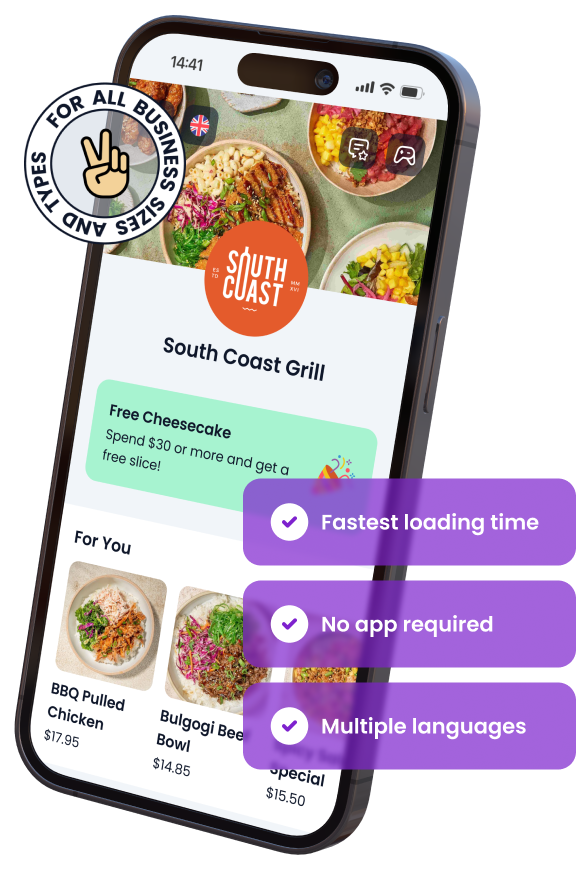
In This Article

Free AI Tools for Restaurants
TRY NOW ➜
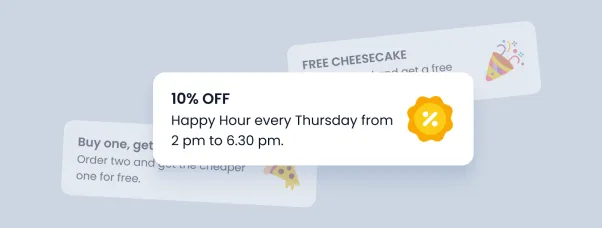
Grab attention with promo and pop-up banners
Highlight offers, events, or announcements right on your menu. At the top or as a pop-up banner.


